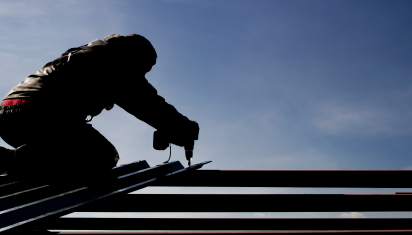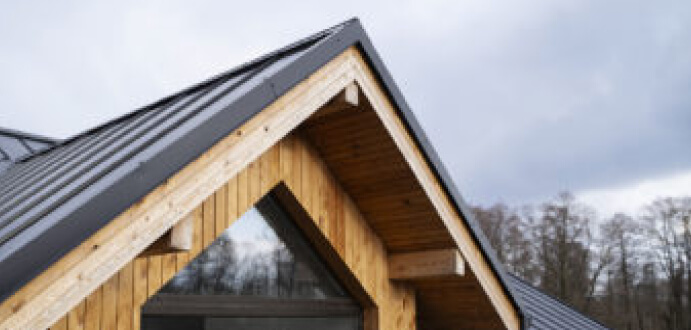How To Install Asphalt Shingles On Your Roof

Knowing how to install roof shingles is a key step in maintaining and protecting your home. This process, while manageable for experienced DIY enthusiasts, requires attention to detail and careful planning. Asphalt shingles remain one of the most popular roofing materials, known for their durability, cost-effectiveness, and ease of installation.
At Naylor & Son's Roofing, we have been serving Ft. Wayne residents for over 50 years with top-quality roofing solutions. If you are repairing damage or starting fresh with a new roof, understanding the proper steps is important for long-lasting results. This guide covers everything you need to know so that your roofing project is a success from start to finish.
How to Install Roof Shingles
Gather Your Tools and Materials
Before starting, gather all the necessary tools and materials. You will need asphalt shingles, roofing nails, a hammer, a utility knife, a roofing felt, a chalk line, and a ladder. Additional items like safety harnesses and roofing adhesive can make the job safer and easier.
Having the right tools leads to the job being done efficiently and safely. Inspect your tools for any damage or wear before you start. A sturdy ladder and reliable safety equipment are especially important when working at heights.
Prepare the Roof Surface
Start by cleaning the roof surface to remove dirt, debris, or old roofing materials. If you are replacing an old roof, strip it down to the decking and inspect for damage. Replace any rotted or weakened sections of wood to offer a strong foundation.
A clean surface means the shingles adhere properly and form a watertight seal. Neglecting this step can lead to future problems, such as leaks or uneven shingle wear. Taking the time to prepare the surface thoroughly will result in a more secure and durable roof.
Install Drip Edges
Drip edges are metal strips that direct water away from the roof and into gutters. Install them along the eaves and gables using roofing nails spaced about 12 inches apart.
Drip edges prevent water from seeping under the roof. They protect the wood and other materials from rot. They also give your roof a polished and professional look. Proper installation of drip edges is a small but important step in maintaining your roof’s integrity.
Lay Down Roofing Felt
Roofing felt, also known as underlayment, comes with a protective barrier between the shingles and the roof deck. Roll out the felt from the eaves to the ridge and overlap each row by at least 2 inches. Secure it with staples or nails.
This layer adds extra protection against moisture and helps keep your roof deck dry. It acts as a secondary barrier in case water penetrates the shingles. Installing the underlayment carefully makes sure your roof is ready to withstand harsh weather conditions.
Mark Guidelines with a Chalk Line
Use a chalk line to create straight guidelines across the roof. These lines help to make sure the shingles are evenly aligned. Start at the bottom and work your way up. Mark every 5 inches.
Guidelines are important for achieving a uniform and professional appearance. They help you avoid uneven rows. This can compromise the roof’s durability and aesthetic appeal. Taking the time to mark accurate lines will make the installation process smoother.
Start Installing Shingles
Begin at the bottom edge of the roof. Lay the first row of shingles with the tabs facing down and secure them with nails. Position each nail about 1 inch above the cutouts, guaranteeing it penetrates the decking.
Overlap each subsequent row so the tabs cover the nails of the row below. Work methodically and move up toward the ridge. The overlapping pattern prevents water from seeping between the shingles and strengthens the roof’s overall structure.
Cut Shingles for Edges and Valleys
Trim shingles to fit edges and valleys using a utility knife. Valleys require extra attention, as they are prone to water accumulation. Use roofing adhesive to secure shingles in these areas for added protection.
Properly sealed edges and valleys are important for preventing leaks and guaranteeing the roof’s longevity. Take your time to measure and cut accurately for a snug fit. This extra effort will save you from dealing with potential water damage later.
Install Ridge Cap Shingles
Ridge cap shingles cover the roof’s peak and provide a polished and protective finish. Fold each shingle over the ridge and secure it with nails on both sides. For added stability, use roofing adhesive.
Ridge caps not only enhance the appearance of your roof but also shield the peak from wind and water damage. Choosing ridge caps that match your shingles guarantees a cohesive and attractive look. Proper installation here is vital for maintaining the roof’s integrity.
Inspect and Clean Up
After installation, inspect the roof for any loose shingles, exposed nails, or missed spots. Address any issues immediately to avoid future problems. Once satisfied, clean up the work area by removing nails, scraps, and debris.
A thorough inspection helps confirm that the roof is secure and ready for use. Cleaning up not only improves safety but also leaves the area neat and professional. Attention to these details reflects the quality of your work.
Maintain Your Roof
Proper maintenance extends the life of your roof. Regularly inspect for damage, especially after storms, and replace missing or damaged shingles promptly. Clean gutters and downspouts to prevent water buildup.
Routine upkeep prevents small issues from becoming costly repairs. Keeping gutters clear reduces the risk of water damage and leads to proper drainage.
Safety Tips for DIY Roofers
Roofing can be a challenging and hazardous task, especially for those unfamiliar with working at heights. Always start by using a sturdy ladder that is properly secured and on level ground. Wear a safety harness to protect yourself in case of slips or falls. Additionally, non-slip footwear is important for maintaining traction on potentially slippery surfaces.
Avoid working in wet, icy, or windy conditions, as these increase the risk of accidents. Plan your project on a day with clear weather to enjoy safety and ease of work. It is also a good idea to have a friend or family member nearby for assistance or emergencies.
If you are unsure about your ability to safely complete the project, it is better to leave it to the experts. A professional residential roofing contractor has the tools, experience, and training to handle roofing jobs efficiently and without unnecessary risk. Prioritizing safety will not only protect you but also make sure the project is completed successfully.
Common Mistakes to Avoid
Skipping the Underlayment
Roofing felt acts as a protective barrier between the shingles and the roof deck. Skipping this layer can allow water to seep into the roof structure. This might lead to damage and rot over time. Without this underlayment, your roof may not be equipped to handle heavy rains or melting snow - increasing the risk of leaks.
Misaligned Shingles
Proper alignment is not just for appearance; it is important for functionality. Crooked shingles can create gaps that expose the roof to water and wind. These gaps weaken the overall structure and can lead to early shingle wear or detachment. Taking time to align each row leads to a seamless and effective installation.
Insufficient Nailing
Using too few nails or placing them incorrectly can compromise the stability of the shingles. Shingles that are not properly secured can shift, loosen, or blow off during strong winds. Each shingle typically requires at least four nails, or more in high-wind areas, to stay firmly in place. Correct nailing patterns also help distribute weight and pressure evenly across the roof.
Avoiding these mistakes makes your roof durable and reliable. This saves you from costly repairs or replacements in the future.
Environmental Impact of Asphalt Shingles
Asphalt shingles are recyclable, making them an eco-friendly choice. When replacing your roof, consider recycling the old shingles instead of sending them to a landfill. Many recycling centers accept asphalt shingles and repurpose them for road construction or other uses.
Choosing recyclable materials helps reduce waste and supports sustainable practices. It is an easy way to make your project more environmentally friendly.
Benefits of Professional Installation
While installing shingles yourself can save money, professional installation brings many advantages. Professionals bring experience and specialized tools. They make sure the job is done correctly and efficiently. They can also spot potential issues that may not be obvious to an untrained eye.
Hiring a licensed contractor, like Naylor & Son’s Roofing, guarantees a high-quality result. A professionally installed roof adds value to your home and offers long-term peace of mind.
Installing asphalt shingles can be a rewarding DIY project, but it requires careful planning and attention to detail. With these steps, you can achieve a durable and attractive roof. For homeowners who prefer professional assistance, Naylor & Son’s Roofing is here to help.
With over 50 years of experience, we are committed to delivering top-quality roofing solutions in Ft. Wayne. Reach out today to explore your options and to make sure your home remains protected and beautiful for years to come.
